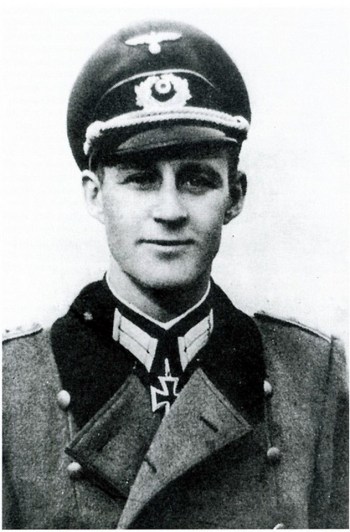The commander of a North African Abwehr unit during World War II, Friedrich von Koenen was born in Danzig (now Gdansk, Poland) on 28 June 1916. Raised in German South West Africa (now Namibia) he joined the Abwehr’s emerging Brandenburg Division in 1941 and assumed command of the Tropenkompanie (Tropical Company; later named Tropenabteilung Koenen, or Tropical Division Koenen) in North Africa. Its members were handpicked, fluent in other languages, and used equipment acquired from Allied forces (such as a British Spitfire aircraft). Deployed on numerous commando and reconnaissance missions, the Tropenkompanie served as an advance unit for Erwin Rommel’s Afrika Korps. One particular success occurred in February 1943, when Koenen conducted a raid against American troops at the village of Sidi-Bou-Zid, Tunisia, and captured 27 tanks and armored troop carriers along with large supplies of guns and munitions. A Knight’s Cross was awarded to him later that year. Transferred to Yugoslavia, Koenen was killed in action on 22 August 1944 near Visegrad, Croatia.
Brandenburgers in North Africa – these are Kommandos of Tropical Company “von Koenen”.
Tropen-Abteilung “von Koenen”
Five companies, based on the former Afrika-Kompanie and led by Fritz von Koenen. 5th Co. was a coastal raider unit (1.-5.).
Beginning in mid-1941, the 13th Company of the 800th Special Purpose Construction Training Regiment Brandenburg was readied in Brandenburg as a “catch basin” for the formation of a tropical company. On 28 October 1941 the first half-company under Oberleutnant Wilhelm von Koenen departed Brandenburg for Tripoli via Naples. It was to be employed as a supply company.
The first live action by the Brandenburgers in North Africa took place during Panzer Group Africa’s eastward advance which began on 22 January 1942.
As this move into Africa had been so quickly conceived and executed, Canaris had had no time to prepare for the employment of his agents there. Within Brandenburg were men who had lived or worked in tropical lands. Most of them were from families that had colonised the former German possessions of East and South West Africa. There were also Palestinian Germans and others from South Africa. Volunteers were called for and these former émigrés came forward in such numbers that within weeks more than sixty had been sifted, interviewed, selected and accepted. To the number of those chosen for the ‘Afrika Kompanie’ were added communication experts. Command of the Company was given to Oberleutnant von Koenen, a man of wide experience with a great knowledge of Africa. He divided the Company into two half-Companies and sent them to Tripoli where the first half-Company arrived in October 1941. The second detachment sailed four months later. Most of the men in ‘Africa Kompanie’ not only spoke English more or less fluently, but also had command of Arabic and Swahili as main languages, backed up by several of the African dialects.
It was intended that the Brandenburg detachments be used for reconnaissance operations: to penetrate a short distance into the British lines and glean information about the conditions awaiting the Panzer Army. This idea of short, sharp missions was changed during June 1942, when it seemed as if Rommel had defeated the British Eighth Army and was about to drive on to the Nile.
In May 1943 the unit managed to escape to Italy. After North Africa was in in action with unit in Greece and Yugoslavia in 1944.
